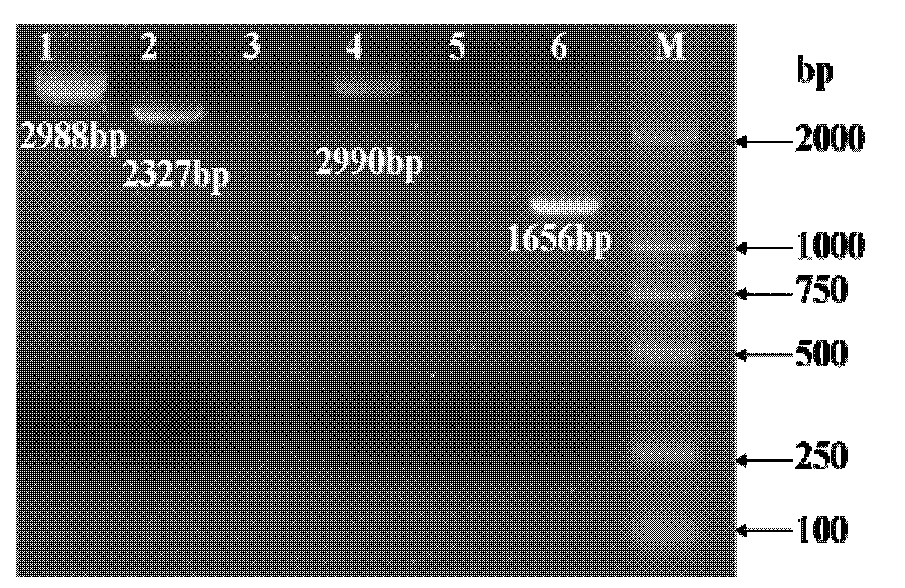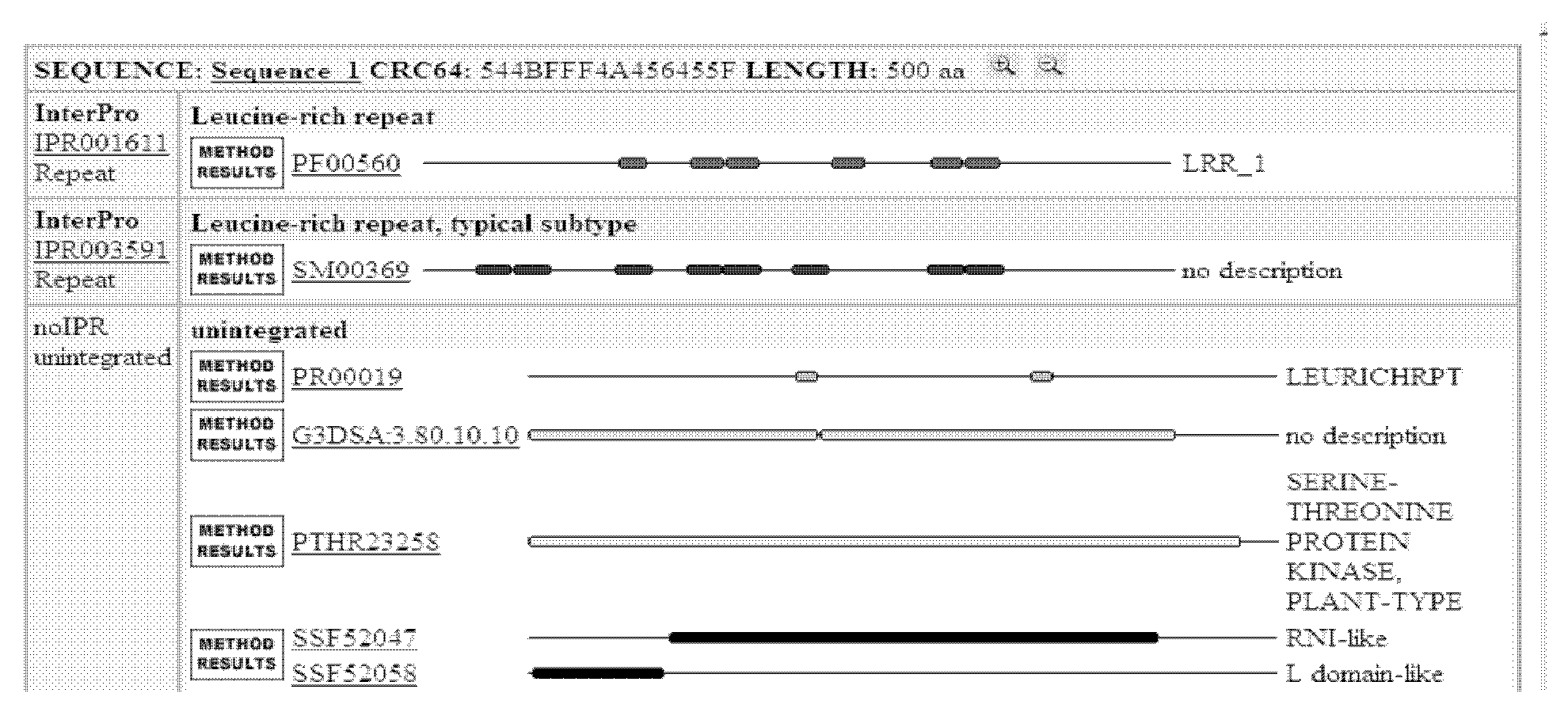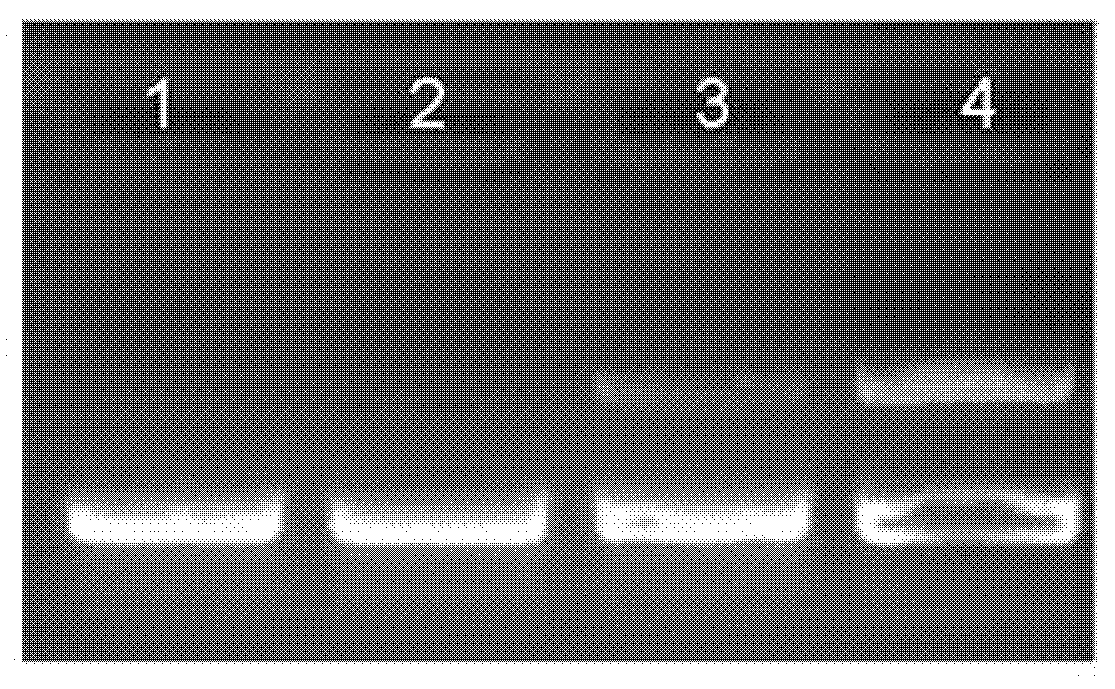Soybean cyst nematode resistance gene and application thereof
A soybean cyst nematode and resistance gene technology, applied in the field of RNA or DNA compound library, can solve the problems of verifying resistance and difficult transformation of soybean, and achieve the effect of broad application prospects
- Summary
- Abstract
- Description
- Claims
- Application Information
AI Technical Summary
Problems solved by technology
Method used
Image
Examples
Embodiment 1
[0054] Example 1 Nucleotide sequence of soybean anti-cyst nematode gene
[0055] The nucleotide sequence of soybean cyst nematode resistance is shown in SEQ ID NO. 1, or shown in any of the following 1)-3),
[0056] 1) DNA molecules that can hybridize and express under stringent conditions with the nucleotide sequence defined in SEQ ID NO. 1;
[0057] 2) An mRNA molecule that has more than 90% homology with the nucleotide sequence described in SEQ ID NO. 1 and can be expressed;
[0058] 3) DNA molecules that have more than 90% homology with the nucleotide sequence described in SEQ ID NO. 1 and can be expressed.
[0059] The stringent conditions can be hybridization in a solution of 6×SSC, 0.5% SDS at 65° C., and then wash the membrane once with 2×SSC, 0.1% SDS and 1×SSC, 0.1% SDS.
[0060] The primer pair for amplifying any of the above-mentioned DNA fragments also belongs to the protection scope of the present invention, for example: SEQ ID NO.3 and SEQ ID NO.4.
[0061] SEQ ID NO. 2 bel...
Embodiment 2
[0062] Example 2 Obtaining soybean anti-cyst nematode gene
[0064] 1) Extraction and reverse transcription of total plant RNA: Take the root and leaf tissues of L-10 and Heinong 37 12 hours after inoculation with nematodes, and extract RNA. The total RNA is detected by agarose gel electrophoresis, 18S and 28S RNA The band type is clearly distinguishable, UV spectrophotometer can detect OD 260 / OD 280 The ratio is between 1.9 and 2.0, indicating that the RNA has good integrity and high purity. Reverse transcription reaction refer to promega ImProm-II TM (Promega) reverse transcription kit for operation.
[0065] 2) Cloning of the full-length sequence of disease resistance candidate genes: using the above reverse transcribed L-10 and Heinong 37 root and leaf cDNA as templates, using the designed gene-specific primers (SEQ ID NO. 3 and SEQ ID NO. ID NO.4) and use the drop-down PCR method to clone the target gene. The reaction system and procedures are show...
Embodiment 3
[0074] Example 3 Functional verification of soybean resistance to cyst nematode gene
[0075] 1. Construction of plant expression vector
[0076] Clone the SRC-J-6 gene sequence into the vector pGFPGUS to construct an overexpression vector pGFPGUS-SRC-J-6. The specific primer sequences are shown in Table 2:
[0077] Table 2. SRC-J-6 amplification primer sequence
[0078]
[0079] The target gene amplification, PCR product purification, ligation, transformation and identification and sequencing of positive clones are the same as above. The pMD18-T-SRC-J-6 recombinant plasmid with the target gene and the empty pGFPGUS vector linked to it were digested with Xba I and Sac I, respectively, and identified by electrophoresis, and recovered about 1.6kb SRC-J with a gel recovery kit -6 fragments and a large fragment of about 13kb of the vector. The obtained small fragment is ligated with the large fragment of pGFPGUS vector to obtain the ligation product. The ligation product was transforme...
PUM
| Property | Measurement | Unit |
|---|---|---|
| degree of freedom | aaaaa | aaaaa |
Abstract
Description
Claims
Application Information
 Login to View More
Login to View More - R&D
- Intellectual Property
- Life Sciences
- Materials
- Tech Scout
- Unparalleled Data Quality
- Higher Quality Content
- 60% Fewer Hallucinations
Browse by: Latest US Patents, China's latest patents, Technical Efficacy Thesaurus, Application Domain, Technology Topic, Popular Technical Reports.
© 2025 PatSnap. All rights reserved.Legal|Privacy policy|Modern Slavery Act Transparency Statement|Sitemap|About US| Contact US: help@patsnap.com



